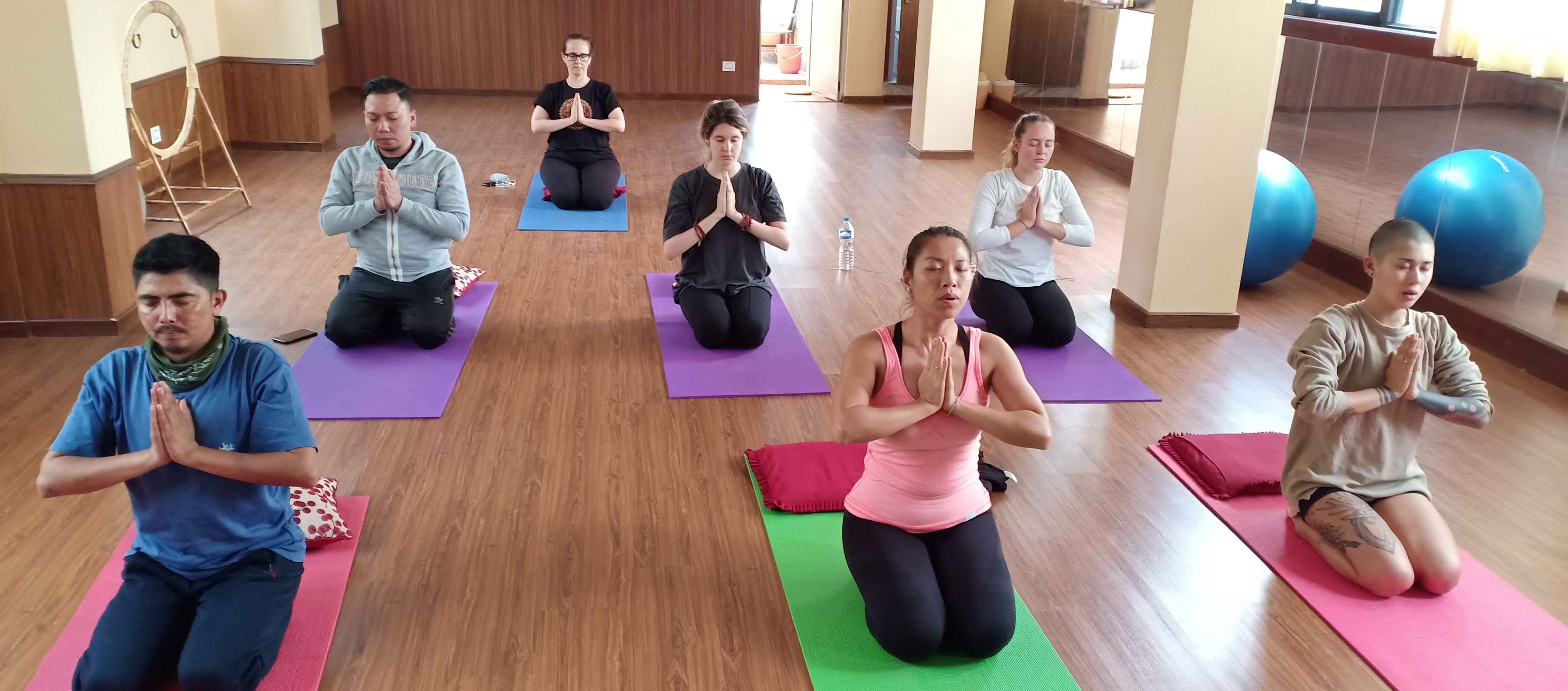
13 Sep 2019 HYN Himalayan Yoga Academy
DHYANA (MEDITATION)
Introduction of Dhyana(Meditation)
The word Dhyana has been derived from the Sanskrit word ‘Dhi’, which means to contemplate, reflect and pay full attention at a point. According to Maharshi Patanjali: “Tatra pratyaikataanataa Dhyaanam”- “An incessant flow of attention on the concentrated object is called Dhyana” It is an adventure into silence.
Dhyana is defined by the Samkhya School of philosophy as “Dhyanam nirvishayam manah” which means the liberation of the mind from all disturbing and distracting emotions, thoughts, and desires.” Dhyana begins from pratyahara (withdrawal of senses) and Dharana (Concentration), the mind becomes steady and one-pointed through deep concentration tends to the uninterrupted flow of consciousness towards one object that becomes Dhyana.
The Sanskrit words Dhyana and Nididhyasana bith are sometimes used for Dhyana, but it has some differences between Dhyana and Nididhyasana, Nididhyanasana means reflection or contemplation” a method used by the Monastic culture of Vedanta, is one of the eastern philosophy, whereas Dhyana is a conscious attempt is made to still the activities of the conscious mind. Through withdrawal of senses and concentration, one-contentedness of mind is achieved and then concentration is changed into Dhayana.
Misconception about Dhyana:
Dhyana(Meditation) and Yoga are not different sciences, Dhyana is one of the major parts or keys for Yoga, ultimately Dhyana through, yoga is attained, Dhyana is itself Yoga, Yoga is itself Samadhi. But Asana and Dhyana are different stages of Yoga. Yoga is Union or harmony, and Dhyana is the means or vehicle to reach that happening.
Dhyana is not merely feeling about something repeating sacred mantras or concentrating on particular objects or matters. It is not the Pooja or Worship or prayer for grossed gains or boons. It is not practiced by force, just realized or happened. Dhyana is a final and inner part of Yoga. After Dhyana, Yoga begins. The word Dhyana has been used for concentration and advises for concentration and musings of various kinds with closed eyes.
In general ordinary students, practitioners, researchers, and thinkers use Dharana and Dhyana indiscriminately. Dhyana cannot be taught which is expressive and abstraction science, but an experiencing art where the consciousness of the practitioners is diffused evenly within and without the body, without showing signs of division.
Measures for Meditation:
The following measures are important measures or requirements for attempting Dhyana.
Place: Places for Dhyana are the Peepal Tree, Gaya Tree, Temples, Gumba, holy places, the bank of the river, the beach shore, the base of the Himalayas, caves, Jungles, and gardens.
Environment: Pure, Fresh, Open, Free, Natural, Greenery and moderate temperature are preferred.
Time: Brahmamuhurta before sun rising, Noon, Sunsets, and Midnight are four periods in the whole day of 45 minutes duration each during junctures.
Mudra: Any Hand Mudras, and Head Mudras
Posture: Any meditative postures like Sahajasana, Sukhasana, Swastikasana, Ardha-padmasana, Padmasana, Siddhasana
Diet: Natural, fresh, live, organic, Satvik food.
Purity of Nadis (Energy Channels): As per the ancient scriptures, before Dhyana practiced Yoga, it was very important to cleanse the nadis. Shatakarma cleanses the internal organs, and asanas make a good foundation, an active and healthy body, by practicing pranayama the body becomes pure, light, and radiant, by pratyahara the sensory organs and senses are controlled, Dharana brings in the shape of concentration, and Dhyana helps in self-realization and finally it leads the aspirants to have Yoga or Samadhi, an enlightenment state. Hence one should practice these patterns; otherwise, there is the likelihood of getting harmed by the practice of the means of yoga.
Types of Dhyana(Meditation):
According to Gheranda Samhita, there are three types of Dhyana: Sthula, Jyotir, and Sukshma
Others: Vipasana Dhyana, Mantra Dhyana, Aajapa Japa Dhyana, Preksha Dhyana, Pranava Dhyana, Brahmanaada Dhyana, Mudra dhyana, Chakra Dhyana, Zen dhyana, etc.
